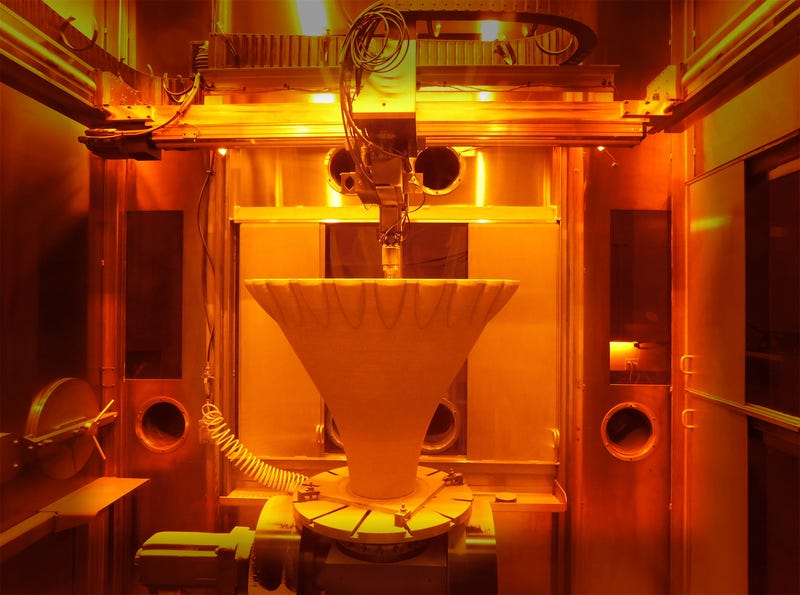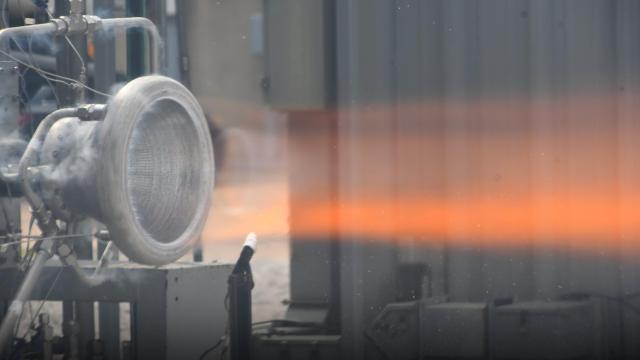In order to be able to carry heavier payloads through deep space, NASA designed a lightweight rocket engine nozzle made of aluminium that can still withstand the heat of launches.
NASA recently tested two 3D printed nozzles at the Marshall Space Flight Center in Huntsville, Alabama, proving that they can operate in the most demanding deep space environments, the space agency announced. Under a partnership with Elementum 3D, the NASA-funded Reactive Additive Manufacturing for the Fourth Industrial Revolution, or RAMFIRE, project focuses on advancing lightweight, additively manufactured aluminum rocket nozzles.
The nozzles operated for nearly 10 minutes during multiple hot fire tests using liquid oxygen and liquid hydrogen, as well as liquid oxygen and liquid methane fuel configurations with pressure chambers in excess of 825 pounds per square inch. “This test series marks a significant milestone for the nozzle,” Paul Gradl, RAMFIRE principal investigator at NASA’s Marshall, said in a statement. “After putting the nozzle through the paces of a demanding hot-fire test series, we’ve demonstrated the nozzle can survive the thermal, structural, and pressure loads for a lunar lander scale engine.”
Rocket engine nozzles are made of a variety of material, including graphite, ceramics or refractory metals. Aluminum has a major advantage over other metals as it is lower in density and is therefore high strength while being lightweight. The only problem is that aluminium has a very low tolerance to extreme heat, and that’s why it is typically not used for additive manufacturing of rocket engine parts.
RAMFIRE set out to create a weldable type of aluminium that is heat resistant enough for use on rocket engines. The RAMFIRE nozzles are designed with small internal channels that keep them cool enough to prevent melting.
The ability to manufacture lightweight rocket components capable of withstanding high structural loads would allow NASA to send more cargo to deep space destinations. “Mass is critical for NASA’s future deep space missions,” John Vickers, principal technologist for NASA’s Space Technology Mission Directorate, said in a statement. “Projects like this mature additive manufacturing along with advanced materials, and will help evolve new propulsion systems, in-space manufacturing, and infrastructure needed for NASA’s ambitious missions to the Moon, Mars, and beyond.”

The RAMFIRE nozzle is also built as a single piece using advanced 3D printing methods, requiring far fewer bonds and significantly reducing manufacturing time, according to NASA. Regular manufacturing, on the other hand, may require as many as a thousand individually joined parts. “We’ve reduced the steps involved in the manufacturing process, allowing us to make large-scale engine components as a single build in a matter of days,” Gradl said.
The RAMFIRE aluminium material and additive manufacturing process was also used to construct other rocket components such as a 36-inch diameter aerospike nozzle with complex integral coolant channels and a vacuum-jacketed tank for cryogenic fluid applications.
